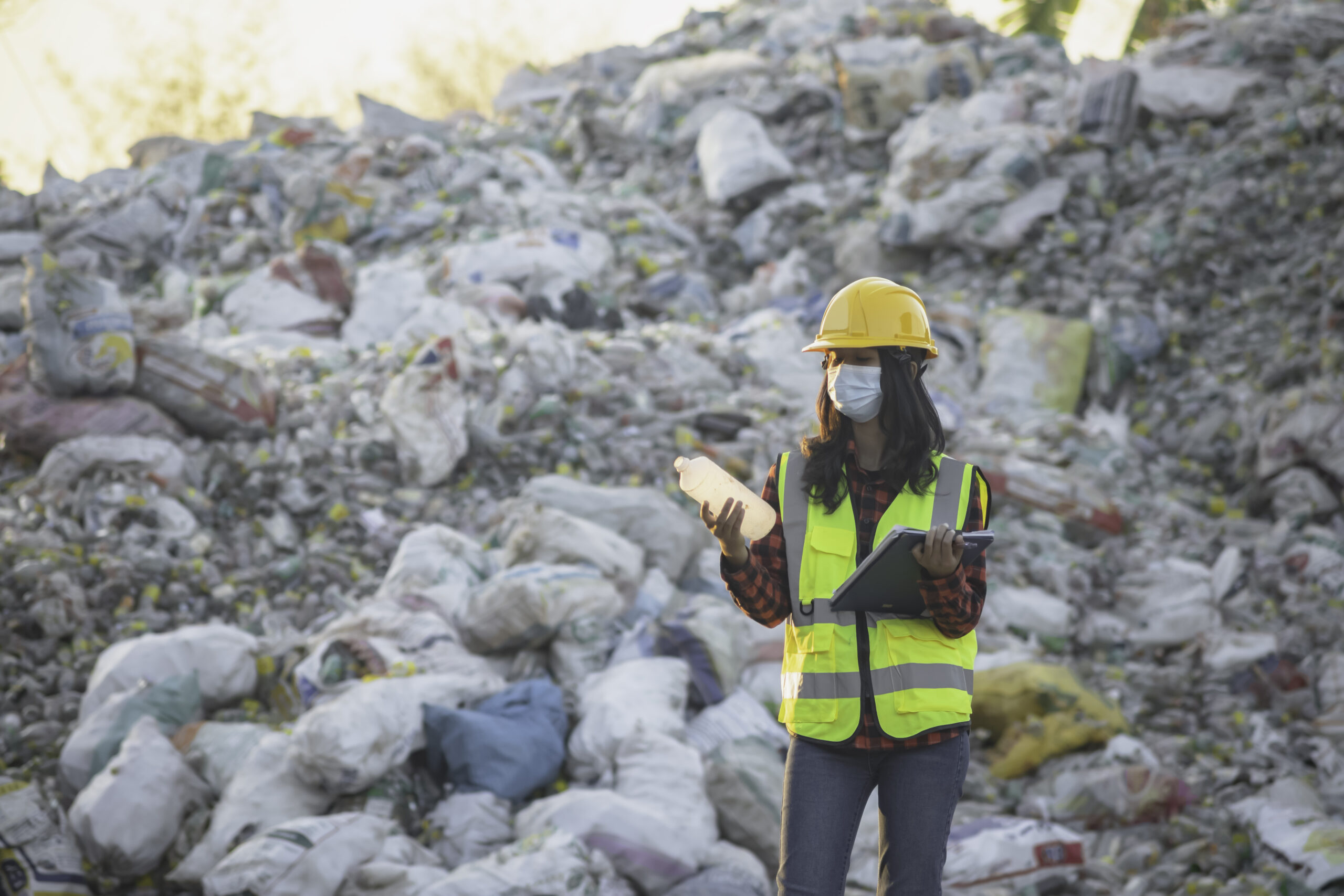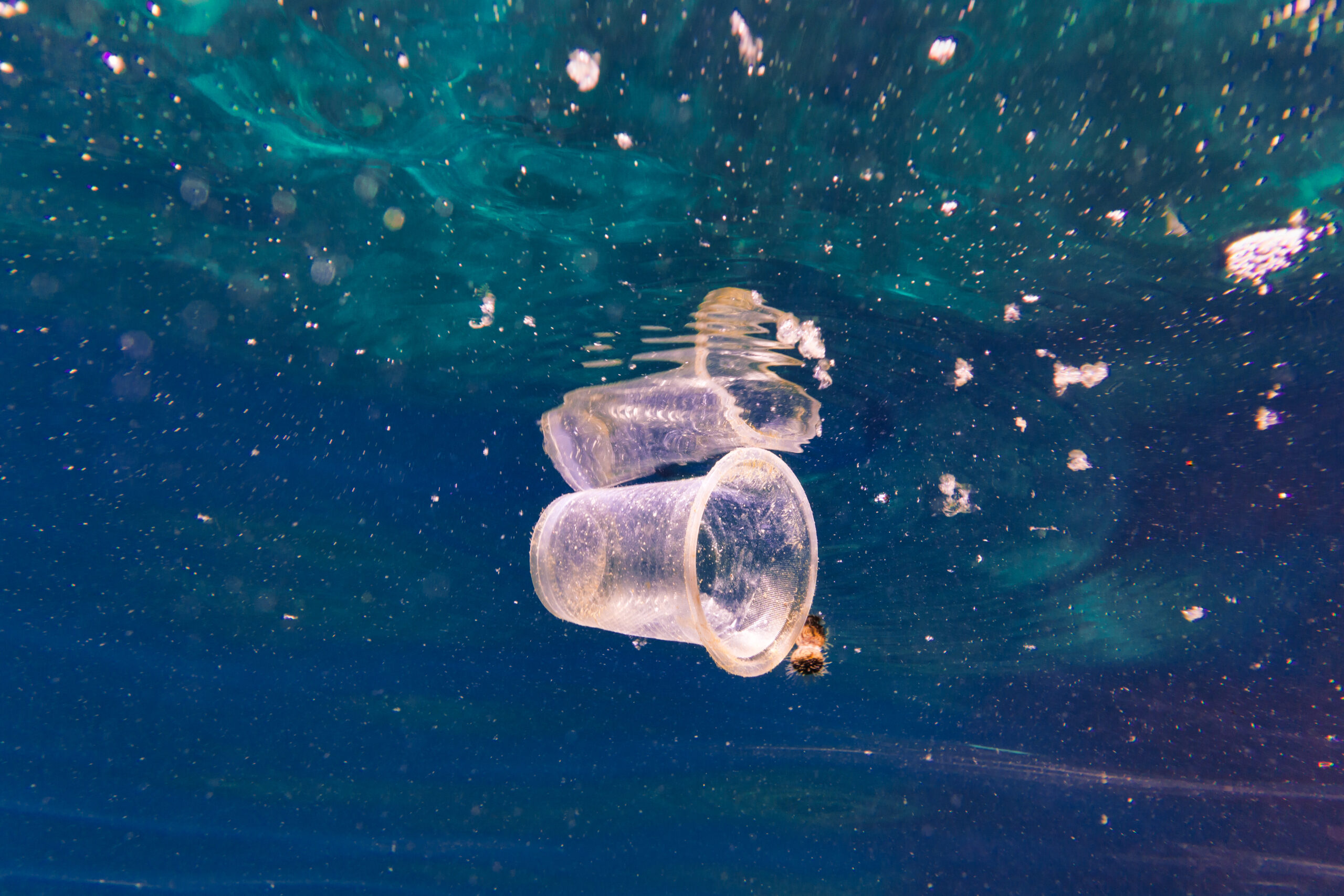Is recycled PET really the best you can do?
PET plastics have become essential to our everyday lives. PET’s benefits are many: it is versatile, durable and recyclable. But PET also presents challenges to sustainability and poses risks to ecosystems and animal life. It even leaches toxic chemicals that may harm human health. Let’s take a look at what PET is, the risks posed by PET, why PET recycling isn’t the silver bullet it seems, and what sustainable alternatives there are to replace PET.

Why we can’t stop using PET
PET (Polyethylene Terephthalate) plastic is a thermoplastic polymer (in the context of textile, PET is referred to as polyester). It’s commonly used for packaging food and beverages – especially bottles for juices, soft drinks and water. PET offers excellent transparency – its crystal clearness means consumers can see what’s inside a package. Add in its lightweight and durable nature, and it’s no wonder PET is ubiquitous in the food and beverage industry. It is also widely used in the cosmetic industry. PET is Europe’s most consumed plastic.
PET is also highly recyclable. In fact, it’s the world’s most recycled plastic. Recycled PET is known as rPET.
What’s the problem with PET recycling?
The world is awash in plastic waste. While PET’s recyclability may be hailed as a sustainable remedy to part of this vast challenge, recycling PET plastics comes with its own challenges – none of which have simple solutions. Let’s break them down.
- Low recycling rates: Despite PET’s recyclability, a lack of efficient recycling infrastructure and collection systems hinders recycling rates. For example, in the US in 2021, only 28.6% of PET bottles and packaging were recycled. The rest? It ends up in landfills, incinerators, and the environment.
- Material degradation: As PET is recycled, the quality of the material may be degraded. This can lead to rPET being weaker and less durable than virgin PET. Quality degradation also limits the number of times PET can be recycled.
- Color variation: rPET may not have the color consistency of virgin PET, resulting in a range of colors that make presenting a uniform product appearance challenging.
- Contaminants: As PET is recycled into rPET, impurities can be a challenge. These may be caused by contaminants from the original materials, remains of non-PET plastics, or foreign substances entering the material during recycling. The result? rPET in products can be negatively impacted by a loss of quality, performance and integrity.

Why PET poses environmental challenges throughout its lifespan
The environmental challenges posed by PET are already present before recycling even begins. The amount of PET plastic produced annually is staggering – nearly 100 million metric tons. PET plastics (like almost all plastics) begin life as fossil fuels.
Greenhouse gases are released throughout PET’s life cycle: first, when extracting and transporting fossil fuels. Then, plastic refining and manufacturing generate more emissions. And managing plastic waste in the form of landfill or incineration also produces greenhouse gas emissions.
Incineration is the leading driver of greenhouse emissions from plastic waste management. Landfill litters the environment, can harm wildlife and create landscape pollution. These negative trends are especially relevant to PET plastics as so much of the material goes unrecycled (more on this below).
And finally, PET plastic may affect our oceans, waterways and landscapes by breaking down into microplastics – tiny particles that may be ingested by marine or land life, threatening ecosystems and potentially entering the food chain.
The toxic truth about PET
Toxicity isn’t a pretty word – but it has to be mentioned when discussing PET. Here’s why:
- Producing PET resin requires hazardous chemicals like ethylene glycol and terephthalic acid. These release harmful emissions during manufacturing.
- When PET plastics are not properly disposed of, they may become carriers of Persistent Organic Pollutants (POPs), organic compounds resistant to environmental degradation. POPs include harmful chemicals like polychlorinated biphenyls, dioxins, and certain pesticides. These substances’ ability to bioaccumulate and biomagnify means they may have adverse effects not just on wildlife but also pose a threat to human health.
- PET plastics leach (or release) antimony, a toxic heavy metal used to speed up the process of manufacturing PET. After production, some antimony may remain in the plastic product, potentially entering the food or beverage it holds. This is significant as antinomy can lead to serious health issues. Exposure to heat, light, soda, juice, or extended storage can result in ongoing antimony leaching from PET plastic.

Sulapac: the biobased, recyclable, compostable alternative to PET
Sulapac is a biobased plastic alternative with a low carbon footprint. It offers several advantages over PET and other PET alternatives. The Sulapac portfolio includes materials for various types of cosmetic packaging and all types of beverages, including carbonated drinks.
Sulapac biodegrades without leaving permanent microplastics or toxic residues behind. Furthermore, the production of Sulapac strictly avoids using any harmful additives typically found in traditional plastic production. In terms of processability, Sulapac outperforms both plain PLA and PHA. For example in thermoforming, the smoothness of manufacturing has surprised both the engineers on the customer side and the material developers at Sulapac.

Unlike PET, Sulapac can be endlessly recycled in a safe and efficient polymer-to-polymer process without worrying about microplastics or toxic accumulation. The innovative polymer-to-polymer recycling process stands apart for its efficiency, consuming less energy and eliminating the need for hazardous chemicals while providing excellent yields. Through this process, carbon stays in circulation almost endlessly. This is not the case in the mechanical recycling of conventional plastic, which relies on constant virgin raw material inputs, keeping the oil drillers busy.
The unfortunate fact is that in their end-of-life only few products actually get recycled. Hence, it is important to point out that Sulapac is an environmentally superior solution compared to PET when incinerated, as the carbon released is (for most part) biogenic instead of oil-based, and there are overall less harmful emissions. Finally, the ashes do not contain microplastics, which can be the case when burning PET.
Most Sulapac material grades are industrially compostable, and some are also home compostable. Sulapac also has safe, sustainable and circular options for reusable items.

By making responsible choices today, we can help shape the course of tomorrow. The spread of microplastics and increasing toxic load are unpleasant facts that we all must face. Switching to sustainable plastic alternatives and reducing the amount of plastic we use is one of the best ways we can help build a cleaner future. If you are interested in exploring Sulapac as an alternative to PET or other plastic types, contact our experts today!
Sulapac Ltd is an award-winning material innovation company bringing solutions to the global plastic crisis. By replacing conventional plastic with sustainable, beautiful, and functional Sulapac materials, companies can reduce their carbon footprint, eliminate microplastic pollution, and advance the circular economy. The Helsinki-based company was founded by three scientists in 2016 and serves customers across various industries on three continents. Investors behind Sulapac®, the patented material innovation, include CHANEL and Sky Ocean Ventures.